Home » Cost Guides » Minnesota Cost Guides » How Much Does it Cost to Build a House in Minneapolis?
Minneapolis is a city bisected by the second longest river in the U.S., the Mississippi River. The great water system helped establish the former timber marketplace and flour milling capital of the world. It is also one of the “Twin Cities” with St. Paul, boasting a thriving arts and cultural scene. The city caters around 55 museums, public murals, independent movie theaters and even drag shows. It is also the home of several award-winning artists such as Bob Dylan, Lizzo and Prince, who put the Minneapolis Sound on the map of musical genres and subgenres.
In the Minneapolis-St.Paul-Bloomington metropolitan area, the millennial home ownership rate is at 51.2%, which is the second highest in the whole country, next to Salt Lake, Utah. Millennials are eyeing Minneapolis and the Twin Cities for two reasons: a lot of homes are within six blocks of a city park, with a nearby river or lake; and the inventory is cheaper than other coastal cities. The COVID-19 pandemic prompted homeownership demands and lifestyle changes. When businesses sent employees to work from home, people were forced to shift around their current dwellings, or even move out and look for a more comfortable place to live and work in. In Minneapolis, more and more apartment occupants are looking for yards and accessibility to parks and other natural attractions.
The Cost of Building a Custom Home in Minneapolis
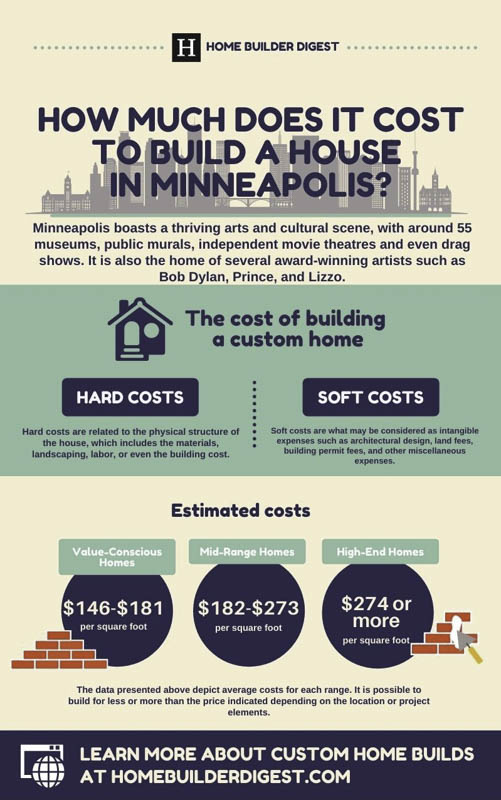
Given all this information, future homeowners and developers might ask: how much does it cost to build a house in Minneapolis?
The Twin Cities is a strong sellers’ market with a small inventory. According to RedFin, The median sale price of single family homes in Minneapolis is $325,000, which is an increase of 8.1% from last year. On average, a home spends 19 days on the market. An in demand home may spend even less, or around 10 days, and may sell for 4% higher than the listing price. Black Dog Homes shares that building a custom home in the Twin Cities can cost around $225 to $300 per square foot, or anywhere between $562,000 and $750,000 for a 2,500-square-foot home.
The price of a new custom home in Minneapolis varies with the labor and resources needed to construct it. New home construction includes framing, foundation, plumbing, roofing, and flooring, most of which are factors that fluctuate in prices independently. It also includes costs such as architecture and design fees, permit fees, land fees, and other custom features. All of these are what make up the hard and soft costs of building a home.
Hard Costs
A home’s hard costs include expenses that fund the physical structure and construction of the house, which includes the materials, landscaping, labor, and even the total building cost. In Minneapolis, BuildZoom (BZ) bids estimate that building a basic or value-conscious custom home costs around $146 per square foot. A middle tier custom home starts at $182 per square foot, while an above-market or luxury custom home is at least $274 per square foot.
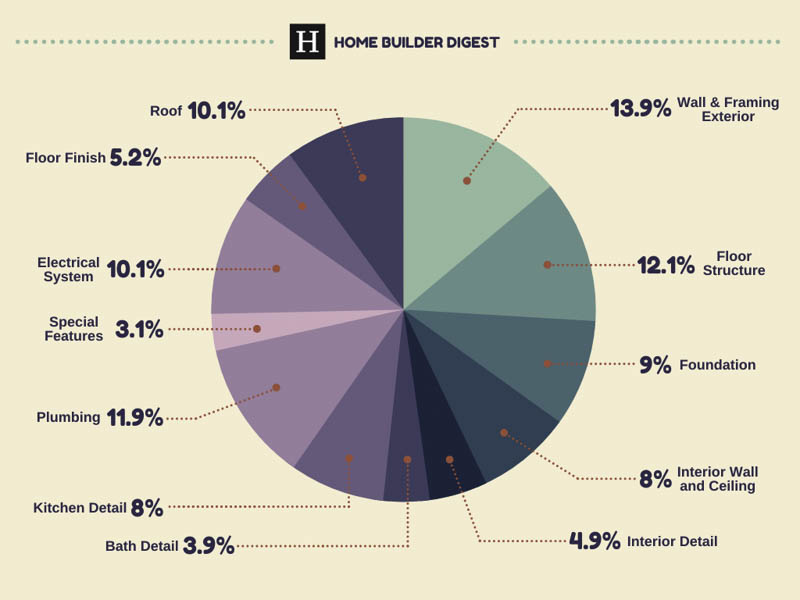
Figure 1. Typical cost breakdown of a single-family home constructed using the conventional method, according to Home Builder Digest. Image Source: National Cost Guide.
Due to the COVID-19 pandemic, lumber costs have skyrocketed nationally, peaking at 300% around May 2021. These high prices were due to the shortage of workers and the increase in demand. Since then, the price of lumber went down significantly to around $770 per thousand board feet, just a little less than two months after the all-time high at $1,515 on May 28. With that, Sustainable Nine Design + Build shares that framing may cost around $50,000 to $75,000, while exterior finishes can be anywhere from $50,000 to $100,000.
Minneapolis is known for its harsh winters and humid summers, where the temperature varies from 9°F to 83°F. Installing a good heating, ventilation, and air conditioning (HVAC) system may be beneficial for the homeowners. One may expect to pay around $3,200 to $6,500 for a furnace installation.
Soft Costs
Soft costs are the expenses that go beyond the construction of the actual home, such as architectural design, land development fees, building permit fees, engineering fees, and other miscellaneous expenses.
Cost of the Land
In constructing your new home, getting the best lot is crucial for the process. Generally, prices may vary due to factors like proximity from metropolitan areas, the view, amenities, land topography and the lot’s current development status. Back in 2018, Minneapolis voted to eliminate the single-family zoning with their new comprehensive city plan. The residential zoning comprised 70% of the former plans, and this move managed to not only decrease the divide between communities, but also increase the values of some properties. Based on Zillow, the average lot price in the city is around $413,500. Most listings above $1,000,000 are those that have easy access to the Minneapolis–Saint Paul (MSP) International Airport and downtown Minneapolis.
Permits and Other Fees
All permits required by the city are filed online. The Minneapolis Development Review (MDR) services refuses to accept hard copies of plans and other construction documents due to the COVID-19 pandemic. The minimum fee for both residential and commercial construction is $84.20, which does not include the Minnesota state fee. For the total cost, the first portion to be computed is the Building Permit Fee, which is generated with respect to the total construction value:

Following, the Plan Review Fee can be taken, which is the Building Permit Fee x 65%. Lastly, it is important to add the Minnesota State Surcharge, which is also taken from the total construction value multiplied by 0.0005. The values generated from the three initial computations will then be added to get the total construction permit fee, to be calculated as follows: Building Permit Fee + Plan Review Fee + Minnesota State Surcharge.
Architecture and Design Fees
Architecture and design fees vary with the size, scope, and complexity of a project. The needs and lifestyle of the client also contribute to the overall or final design. Some designs may be simple and straightforward, while some may require extensive research and attention to detail. Generally, the cost of architecture and design is computed using a percentage of the total construction cost, but some may charge a fixed rate. In one of their articles, Minneapolis-based firm David Lund Design discusses residential design fees. According to them, fees are usually a flat rate of 10% of the construction budget. For the Twin Cities, however, a full-service residential design can be anywhere from 8 to 15% of the total project cost, with non-metro areas possibly lower.
How do the custom home building costs in Minneapolis compare to other nearby cities?
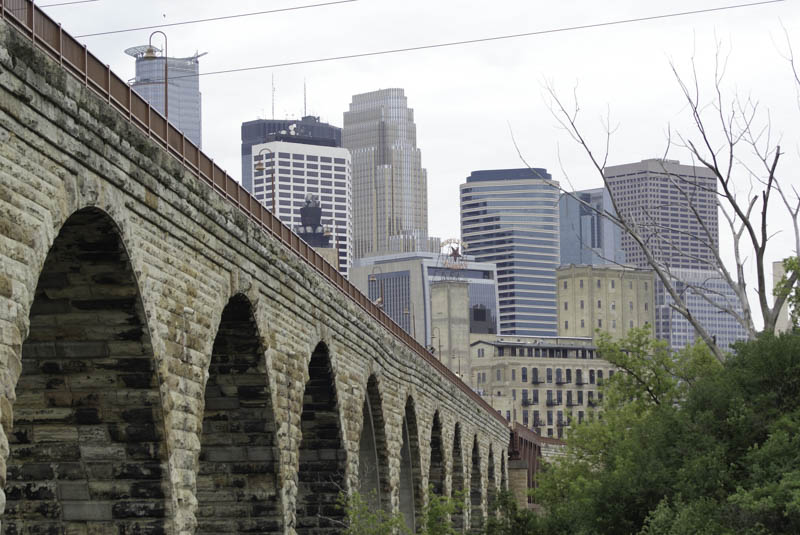
Detached single family homes account for approximately 42.5% of the housing units in Minneapolis. Even with the COVID-19 pandemic, people still moved into Minneapolis, where the population Downtown grew by 3.5% in 2020. According to Norada Real Estate, popular neighborhoods in the city include Downtown East, Camden, Northeast Park, Powderhorn and Calhoun-Isles. Home prices in the area are somewhat average compared to the following cities, most of which are, similarly, very competitive markets:
Golden Valley
Homes in Golden Valley are priced at around $425,000, a 5.9% increase from last year. Other than the median price, the number of days it takes to sell a house in the area is also lower, with 17 days as of November 2021 compared to the same month in 2020. On average, average homes sell for 1% higher than the listing price, while in demand homes sell for 4% higher than the listing price. As for the cost of new home construction, it costs an average of $441,389 according to BuildZoom permits.
Columbia Heights
As of November 2021, the median price of homes in Columbia Heights reached $275,000, which is 7.3% higher than the previous year. Some homes may sell for 1% higher than the original listing, and may take around 19 days to be sold, while in demand homes can go for about 4% more than the listing price. BuildZoom permits state that the average cost of building a new home in the area is around $346,000.
Robbinsdale
Compared to the mentioned cities, Robbinsdale’s home prices decreased by 0.59% in the past year. The current median price in the city is at $279,000, and some listings sell at 1% higher than the listed price, with more in demand properties selling for 5% higher. It takes around 26 days for a home to be sold. According to BuildZoom permits, the average cost of building a new home in the area by 2021 is around $375,153.
What Leading Custom Home Builders and Architects that Serve the Minneapolis Area Say
To give more information on the housing market, we reached out to home builders and architects that serve Minneapolis to give us their insight regarding the current costs of single family home construction.
MSR Design principal, Paul Mellblom, shares that with the current trends for construction in Minneapolis, it is unlikely that property values will slow down any time soon, and are most likely to maintain their present rate or even grow. There are still disruptions in major areas of construction such as the volatile price of lumber, high costs of steel and long lead time for appliances. Homeowners who are planning to construct or remodel should expect longer project timelines, and make appropriate adjustments for the varied procurement times. In addition, permit applications and approval in the Twin Cities are still slow. With those factors, Mellblom states that entry level homes may cost around $250 to $300 per square foot, while high end or luxury homes may go anywhere from $500 to $1,000 per square foot or even higher. As for the fees, lower end homes tend to be charged 6% to 9% of the construction cost, depending on the extent of the services. For high end, the fees range between 8 and 18% of the total project cost, which may include both architecture and interior design.
Kurt Gough, founding partner at Shelter Architecture +Interior Design, adds that the supply chain issues have created a lot of uncertainty not just on costs, but also on availability. Contractors and firms experienced schedules prolonged by issues they never had to worry about prior to the COVID-19 pandemic. There may be delays in getting a furnace from a manufacturer because an overseas distributor or supplier cannot ship a component.
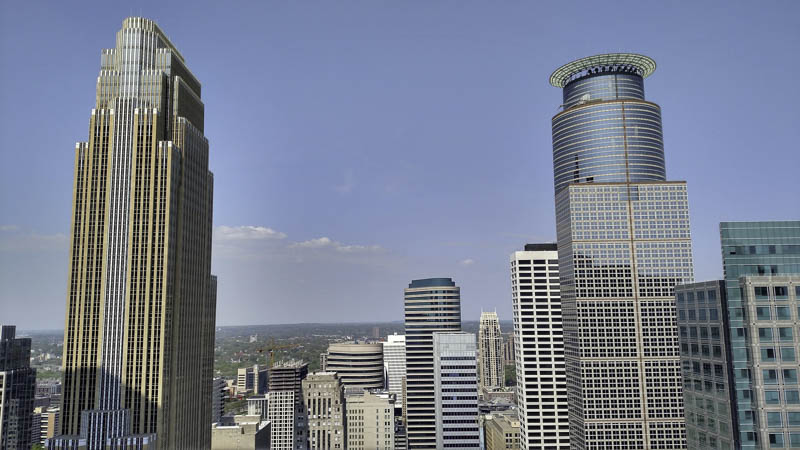
Christopher Strom, principal of Christopher Strom Architects, places the price of middle tier homes at around $250 to $325 per square foot, while high-end and luxury are around $400 to $800 per square foot. He believes that building a new home under $200 per square foot in the Twin Cities would be unlikely unless the contractor uses the minimum code or lowest standards, and even the bottom 20% of all the fixtures and fittings. Strom also expresses his agreement with Paul Mellblom’s estimated values, and adds that the architecture and design percentage provided by David Lund Design is consistent with what he sees in the industry.
For Mark Williams, principal of Mark D. Williams Custom Homes Inc, he discusses how the average cost per square foot is a common inquiry when meeting with a prospective client. A high end cottage home complete with wainscoting, beams, crowns, etc. may easily increase the price of a home by at least $25 per square foot, while a highly-automated home with auto blinds and remote control features can be at least $30,000, and may still vary with the system the client will choose. In both situations, the final costs depend on the preferences of the client. The recent circumstances with high demand and limited supply in the construction industry may indicate an upward trend in the next two to four years. The Minneapolis housing market is behind in meeting housing demands by almost a decade, which led to historically low inventory while the city population continues to grow. Although their firm operates within the high-end custom market, Williams emphasizes that there should be available housing in all the price levels to allow mobility for families with different needs. Interest rates may have reached all-time lows, but combined with the problems with housing, supply shortage, and inflation, it may start and continue to rise within the next couple of years. With that, people are choosing to build now since it will be more expensive in the future.
The Future of Minneapolis’s Residential Construction Industry
With the successful vaccine rollout in 2021, residential construction in the Twin Cities is on a steady rise. The Minneapolis Public Housing Authority is also planning to build 84 units on 16 separate sites all across the city starting this year. This move is in response to the city’s need for affordable housing, which is more prominent with the housing shortage and supply chain issues due to the COVID-19 pandemic. The Twin Cities is also seeing a rise in gated communities, and even the east-metro area that has never had a large-scale gated community will soon have one each in Oakdale and Lake Elmo. Minneapolis also has the lowest vacancy rate in the whole country.
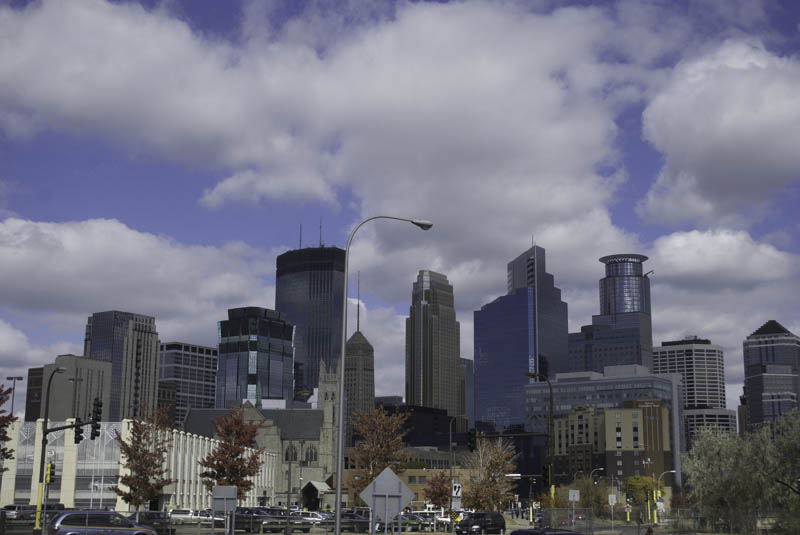
It is also worth noting that the Federal Reserve recently hinted at an interest rate hike, which may be implemented in two months or so, to address inflation due to the effects of the pandemic on the global economy. The expected increase may, in turn, increase mortgage and slow down the highly competitive Minneapolis housing market. Traditionally, colder weather means fewer people looking for homes, and with the start of the new school year, parents are less likely to change residences. The historically-low interest rates during lockdown prompted people to buy homes, and the new interest rates may somewhat encourage more prospective homeowners to plan and develop before it is finally implemented.
Considering building a home in Minneapolis?
Contact us for a free consultation

